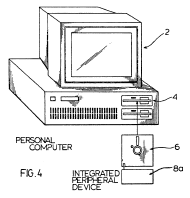In the wake of the Lundgren case, the USPTO has released a set of interim examination guidelines for determining subject matter eligibility of patent applications. (Link). The guidelines will be used by examiners “in determining, on a case-by-case basis, whether a claimed invention falls within a judicial exception to statutory subject matter (i.e., is nothing more than an abstract idea, law of nature, or natural phenomenon), or whether it is a practical application of a judicial exception to statutory subject matter.”
The crux of the new guidelines is that an invention falls within the scope of 35 U.S.C. 101 “if the claimed invention physically transforms an article or physical object to a different state or thing, or if the claimed invention otherwise produces a useful, concrete, and tangible result.” The application itself should enable one of ordinary skill in the art to understand the utility of the invention.
To continue reading, become a Patently-O member. Already a member? Simply log in to access the full post.
 PC Connector Solutions v. SmartDisk (Fed. Cir. 2005).
PC Connector Solutions v. SmartDisk (Fed. Cir. 2005).  The first Patently-O Patent Prosecution TipCast has just been released. The TipCast series is an audio lecture series that is intended to provide helpful hints and information to patent attorneys and agents. TipCast No. 1 provides a tip relating to revival of abandoned applications.
The first Patently-O Patent Prosecution TipCast has just been released. The TipCast series is an audio lecture series that is intended to provide helpful hints and information to patent attorneys and agents. TipCast No. 1 provides a tip relating to revival of abandoned applications.